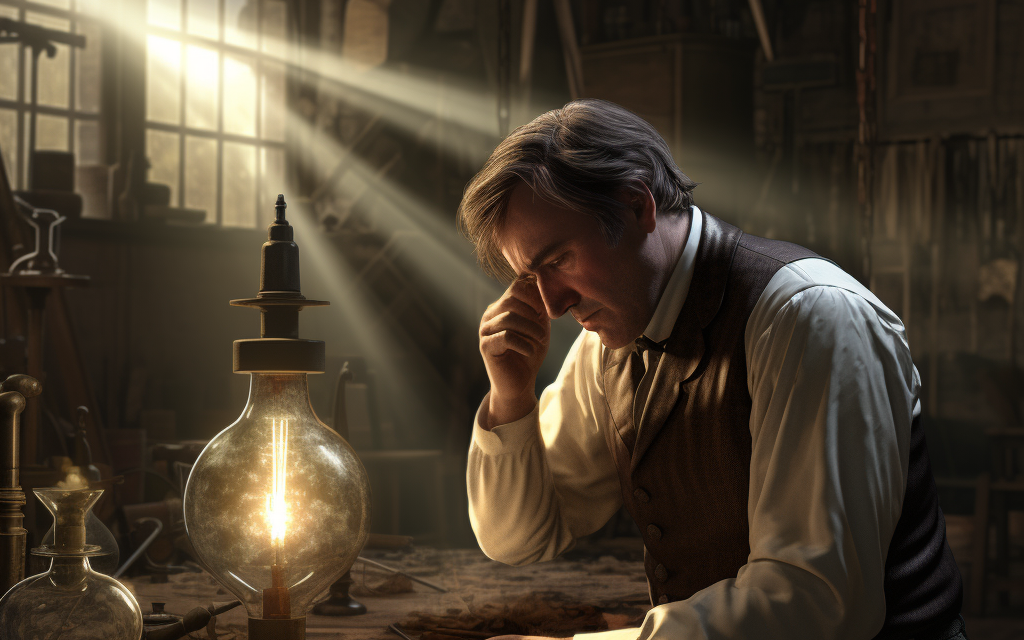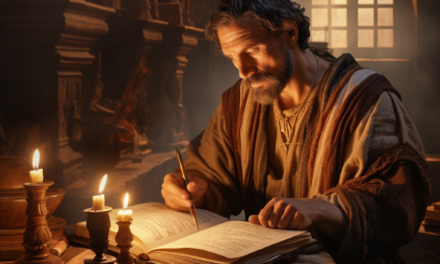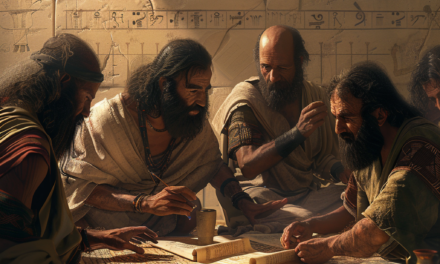Introduction
Imagine our world without the humble lightbulb: dinner by candlelight isn’t just for romantic evenings but every night, and trying to read your favorite book under the dim glow of a candle? Forget about it. The lightbulb didn’t just illuminate our homes; it transformed our society, extending our days, powering our industries, and inspiring countless innovations. But who do we have to thank for this brilliant invention? Let’s shed some light on the luminaries behind the lightbulb.
The Quest for Artificial Light
Imagine the scene: night falls, and the only thing standing between you and complete darkness is a candle that burns as steadfastly as your hopes for a brighter future. Our ancestors weren’t just sitting in the dark, pining for the sun; they were busy at work, trying to outshine the night with whatever they had on hand. Candles and oil lamps were the iPhones and Teslas of their day—cutting-edge technology that said, “Look at me, I’ve made fire portable!”
But let’s be real, the sooty residue and constant maintenance of candles and oil lamps were about as appealing as getting a root canal. They were messy, they were a fire hazard, and if you’ve ever tried reading by candlelight, you know it’s an express ticket to Headache City. Humanity was ready for an upgrade, and the quest for a better light source was on.
In their pursuit, early innovators faced more than just technical challenges; they battled the constraints of their imaginations, societal skepticism, and the daunting reality that they were trying to mimic one of nature’s most powerful forces on a scale small enough to fit into a living room. It was a bold quest, filled with trials, errors, and the occasional explosion (because what’s a little progress without a few fireworks?).
As our ancestors tinkered and toiled, their efforts laid the groundwork for one of humanity’s most illuminating achievements. The quest for artificial light wasn’t just about conquering the darkness; it was about igniting the flame of innovation that would light the path to the modern world. It was a journey from flickering flames to the steady glow of progress, proving that with a bit of ingenuity (and maybe a few singed eyebrows), the night was theirs for the taking.
Collaboration and Competition
Edison’s journey to illuminate the world was not a solo venture but rather a symphony of minds, featuring key players like Joseph Swan, who had also been wrestling with the puzzle of electric light. This collaboration was not merely about sharing notes over tea; it was a melding of visions, culminating in a brighter future, quite literally. But what’s a story without a little drama? Enter Nikola Tesla, the virtuoso of alternating current, whose ideas clashed with Edison’s like cymbals in an orchestra. Their rivalry, famously known as the “War of Currents,” was electrifying, to say the least. Yet, it was through this very friction that the spark of innovation was fanned into flame, demonstrating that competition and collaboration are not opposing forces but complementary elements that fuel progress.
Key Figures in the Discovery
- Humphry Davy: Picture a man with a battery, two wires, and a piece of carbon. No, it’s not a DIY project gone wrong; it’s Humphry Davy inventing the arc lamp in 1806. His creation could light up a room like never before, but with the intensity of a small sun and a lifespan shorter than a fruit fly’s, it wasn’t quite the home lighting solution folks were hoping for.
- Joseph Swan: Across the pond, Joseph Swan was wrestling with filaments in England, trying to find something that wouldn’t just burn up in a puff of smoke. His house was the first in the world to be lit by a lightbulb, making his dinner parties the hottest ticket in town—literally, since those early bulbs could get hotter than a summer in Death Valley.
- Thomas Edison: Enter Thomas Edison, the man with a plan (and a patent office on speed dial). Edison once said, “I have not failed. I’ve just found 10,000 ways that won’t work.” Talk about optimism—or stubbornness, take your pick. Edison’s relentless experimentation led to the development of a carbonized bamboo filament that could glow for over 1200 hours. Who knew the secret to lighting up the world was sitting in a garden?
- Nikola Tesla: And then there’s Nikola Tesla, the man who dreamed of lighting the world wirelessly. While Edison was stringing wires, Tesla was imagining a world powered by alternating currents. The two had a bit of a sparky relationship, to say the least. Tesla’s work laid the foundation for the AC electrical system that powers our homes today, proving that sometimes, the current does change.
Edison’s Breakthrough
Thomas Edison’s journey to invent the lightbulb was akin to a mad scientist’s wildest roller coaster ride—full of highs, lows, and more than a few unexpected twists. Picture Edison in his laboratory, a place where ambition met persistence head-on, surrounded by hundreds of failed experiments and prototypes. It wasn’t merely a quest; it was an obsession.
The breakthrough came not with a sudden flash of brilliance, but as the result of painstaking experimentation and an unyielding refusal to give up. Edison knew he was onto something with the concept of incandescent lighting, but the challenge was making it practical, durable, and, well, not a fire hazard. The solution? A carbonized filament housed within a vacuum environment inside the bulb. This ingenious setup prevented the filament from burning too quickly and allowed it to glow with a warm, inviting light.
But why a vacuum, you ask? In the absence of air, the filament wouldn’t oxidize and burn out, allowing it to glow brightly for much longer than any material exposed to air. It was a game-changer. Edison experimented with over 6,000 materials, from bamboo to fishing line, in his relentless pursuit of the perfect filament. When he finally settled on carbonized bamboo, the result was nothing short of revolutionary.
When Edison unveiled his lightbulb to the world, it was more than just a demonstration of electric lighting; it was a glimpse into the future. Homes and streets that were once cloaked in darkness could now bask in the glow of electric light. Edison’s lightbulb wasn’t merely a bright idea—it was a beacon that lit the path towards a future powered by electricity, forever changing the way we live, work, and play. It was, in every sense, the light at the end of the tunnel for a world dimly lit by candles and gas lamps.
Technological Challenges and Solutions
The path to Edison’s groundbreaking invention was littered with more failures than a novice baker’s first attempt at sourdough. The lab, Edison’s arena, was a testament to trial and error, where the air was thick with the scent of ambition… and occasionally, the smell of burning materials. The quest for the perfect filament was akin to searching for a needle in a haystack, if the needle kept incinerating. Edison’s experiments spanned the gamut from the precious (platinum) to the peculiar (squirrel fur), in a relentless pursuit of a material that could endure the heat without staging a dramatic, fiery exit. Ultimately, Edison’s Eureka moment came with bamboo, a humble plant that, when carbonized, possessed just the right qualities to glow warmly and steadfastly. This discovery underscored a profound truth in innovation: sometimes, the most extraordinary solutions come from the most ordinary places.
Global Impact and Adoption
The lightbulb wasn’t just an invention; it was a revolution wrapped in glass. Its glow reached far beyond the corners of a room, touching every aspect of human life. Workdays stretched longer, productivity soared, and cities took on a new life under the electric stars. The 1893 World’s Columbian Exposition in Chicago stood as a testament to this new era, with Edison’s bulbs casting their glow over the fairgrounds, a beacon of the possibilities that lay ahead. In that moment, the lightbulb transcended its role as a mere object and became a symbol of hope, a promise that no darkness was too deep to be dispelled.
Legacy and Modern Developments
The narrative of the lightbulb is a continuum, tracing the arc of human ingenuity from Edison’s bamboo filament to the sophisticated LED technology of today. LEDs are the modern bearers of Edison’s legacy, embodying the quest for luminosity that consumes less and lasts longer. They represent not just an evolution in technology but a reflection of our enduring pursuit of better, smarter ways to light our path. The lightbulb, in all its forms, remains a testament to the undying human spirit to challenge the status quo, pushing the boundaries of what’s possible and illuminating the way for future generations.
Conclusion
The tale of the lightbulb is more than just a history lesson; it’s a story of perseverance, ingenuity, and the relentless human spirit. Edison, Swan, Tesla, and others didn’t just give us light; they illuminated the path of progress, sparking an era of innovation that continues to glow. As we switch on a light today, we’re not just banishing shadows; we’re continuing a legacy of discovery that lights the way forward. So, the next time you flip that switch, give a nod to those bright minds of the past. They’ve made sure that, for us, the future looks dazzling.





